
Circulation-Cardiovascular Imaging
Scope & Guideline
Pioneering research that influences clinical practices and patient care.
Introduction
Aims and Scopes
- Cardiovascular Magnetic Resonance (CMR) Imaging:
A core focus of the journal is on the use of CMR for diagnosing and managing various cardiac conditions, including myocardial infarction, cardiomyopathies, and valvular diseases. - Computed Tomography (CT) Imaging:
The journal emphasizes the role of CT in assessing coronary artery disease, evaluating cardiac anatomy, and guiding interventional procedures. - Echocardiography:
Echocardiographic techniques and their evolving applications in diagnosing heart disease, particularly in assessing left ventricular function and valvular disorders, are highlighted. - Artificial Intelligence and Machine Learning:
The integration of AI and machine learning in analyzing imaging data for predictive analytics and improving diagnostic accuracy is a growing area of interest. - Multimodality Imaging:
The journal promotes research that combines various imaging techniques to provide comprehensive assessments of cardiac conditions and improve patient outcomes. - Clinical Implications and Outcomes:
Research that connects imaging findings with clinical outcomes, treatment decisions, and prognostic implications is a significant focus area.
Trending and Emerging
- Artificial Intelligence and Machine Learning:
There is a significant rise in the application of AI and machine learning algorithms to enhance the analysis of imaging data, improve diagnostic accuracy, and predict patient outcomes. - Contrast-Free Imaging Techniques:
Emerging research focuses on developing contrast-free imaging methods, particularly in CMR, to reduce risks associated with contrast agents while maintaining diagnostic efficacy. - Radiomics and Imaging Biomarkers:
The integration of radiomics—extracting large amounts of quantitative features from medical images—is gaining traction, particularly in predicting disease progression and treatment responses. - Comprehensive Risk Assessment:
Studies that utilize imaging for comprehensive cardiovascular risk assessment, including the evaluation of coronary artery calcium and plaque characteristics, are increasingly prominent. - Personalized Medicine in Cardiology:
Research aimed at tailoring imaging approaches to individual patient profiles and specific cardiovascular conditions is on the rise, highlighting the move towards personalized healthcare. - Longitudinal and Outcome-Based Studies:
An emphasis on longitudinal studies that assess the impact of imaging findings on long-term patient outcomes and treatment efficacy is becoming more common.
Declining or Waning
- Traditional Imaging Techniques:
There has been a noticeable decrease in studies focused solely on traditional imaging techniques without the integration of advanced technologies or multimodal approaches. - Basic Descriptive Studies:
Research that primarily describes imaging findings without linking them to clinical outcomes or advancements in technique has become less frequent, as the journal shifts towards more impactful studies. - Single Modality Studies:
Papers focusing on a single imaging modality without a multimodal perspective are becoming less common, indicating a trend towards comprehensive imaging strategies that incorporate multiple techniques. - Basic Research in Cardiac Imaging:
Studies that do not translate into clinical applications or fail to address patient-centered outcomes are receiving less attention, reflecting a push towards research with direct clinical relevance.
Similar Journals

CANADIAN JOURNAL OF CARDIOLOGY
Transforming Cardiology with High-Impact ResearchCanadian Journal of Cardiology (ISSN: 0828-282X, E-ISSN: 1916-7075), published by Elsevier Science Inc, serves as a vital platform for disseminating high-quality research in the dynamic field of cardiology and cardiovascular medicine. Since its inception in 1985, this journal has established itself as a leader in the field, currently holding a prestigious Q1 ranking in Cardiology, indicating its significant impact and contribution to medical science. With a Scopus rank of #50 out of 387 in its category and placing in the 87th percentile, the journal showcases rigorous peer-reviewed articles that advance knowledge and practice in cardiology. Although the journal is not open access, it provides valuable insights and research findings that cater to clinicians, researchers, and students who are committed to improving cardiovascular health. As we approach the convergence of years to 2024, the Canadian Journal of Cardiology continues to strive for excellence, facilitating a discourse vital for both academic and clinical advancements in cardiology.
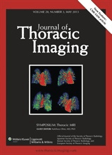
JOURNAL OF THORACIC IMAGING
Exploring New Frontiers in Pulmonary ImagingThe JOURNAL OF THORACIC IMAGING, published by Lippincott Williams & Wilkins, stands as a pivotal resource in the fields of Pulmonary and Respiratory Medicine as well as Radiology, Nuclear Medicine, and Imaging. With the ISSN 0883-5993 and E-ISSN 1536-0237, this esteemed journal has been providing critical insights and advancements since its inception in 1985, contributing significantly to the ongoing dialogue and research within these disciplines. The journal maintains a commendable position, ranking in the Q2 category in both relevant fields and achieving an impressive Scopus ranking of #46 out of 333 in Radiology and #30 out of 155 in Pulmonary Medicine, showcasing its influence and impact (with particles in the 86th and 80th percentiles, respectively). While the journal is not open access, it continues to disseminate high-quality research that informs clinical best practices and emerging technologies in thoracic imaging. As a leading publication, it serves as an essential tool for researchers, clinicians, and students seeking to stay at the forefront of thoracic health innovations.
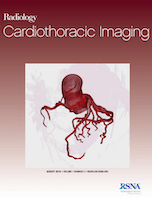
Radiology-Cardiothoracic Imaging
Exploring the Depths of Diagnostic ImagingRadiology-Cardiothoracic Imaging, published by the Radiological Society of North America (RSNA), is a leading peer-reviewed journal dedicated to advancing knowledge in the field of cardiothoracic radiology. With an ISSN of 2638-6135 and a remarkable 2023 Scopus ranking of #5 out of 333 in its category, the journal stands out in the Q1 tier for Radiology, Nuclear Medicine, and Imaging, showcasing its significant impact and high-quality research contributions. The journal is committed to providing an open platform for innovative research, insightful reviews, and clinical studies that address the complexities of cardiothoracic imaging, thereby facilitating the enhancement of diagnostic and therapeutic strategies. Operating out of Oak Brook, Illinois, the journal aims to engage a diverse audience of researchers, professionals, and students, fostering collaboration and knowledge exchange within this vital area of radiological science. With a convergence of years extending from 2019 to 2024, Radiology-Cardiothoracic Imaging remains at the forefront of emerging trends and findings, making it an essential resource for anyone passionate about the evolving landscape of cardiothoracic imaging.

Iranian Journal of Radiology
Empowering Professionals with Essential Radiology ResearchWelcome to the Iranian Journal of Radiology, a pivotal platform dedicated to advancing the field of radiology, nuclear medicine, and medical imaging. Published by BRIEFLAND, this journal aims to disseminate high-quality original research, reviews, and clinical studies that contribute substantially to the global scientific community. Established in 2008 and spanning until 2024, the journal provides an essential archive of knowledge in a rapidly evolving discipline. Although it currently holds a Q4 quartile ranking in the 2023 Scopus metrics, it serves as an important resource for both emerging and established researchers looking to submit their work. Located in the Netherlands, the journal is committed to open dialogue and collaboration amongst professionals in the field, reflecting its accessibility and relevance to both practitioners and academics. With its continued growth and commitment to quality, the Iranian Journal of Radiology is poised to enhance understanding and innovation in diagnostic imaging.

SEMINARS IN ROENTGENOLOGY
Transforming Radiology Through Comprehensive ReviewsSEMINARS IN ROENTGENOLOGY is a revered journal dedicated to the dynamic fields of Radiology, Nuclear Medicine, and Imaging, published by W B SAUNDERS CO-ELSEVIER INC. With a legacy spanning from 1966 to 2024, this journal provides a platform for comprehensive review articles that foster scholarly discussion and advancement in diagnostic imaging techniques and methodologies. Although currently not an open access publication, SEMINARS IN ROENTGENOLOGY holds significant relevance within its field, reflected by its inclusion in the Q4 category in the latest 2023 Journal Rankings and its position in the 20th percentile among its peers. This journal appeals widely to researchers, professionals, and students aiming to enhance their knowledge and contribute to the evolving landscape of radiologic science. Notable for its informative content and expert insights, SEMINARS IN ROENTGENOLOGY continues to serve as an essential resource for those committed to advancing clinical practice and research in radiology.
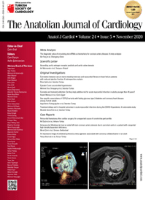
Anatolian Journal of Cardiology
Exploring Innovative Pathways in Cardiovascular Medicine.The Anatolian Journal of Cardiology, published by KARE PUBL, stands as a vital resource in the field of Cardiology and Cardiovascular Medicine. With an ISSN of 2149-2263 and E-ISSN 2149-2271, this Open Access journal has been fostering the dissemination of critical research since 2001, ensuring that high-quality content is freely available to a global audience. Based in Turkey, the journal aims to bridge gaps in cardiological knowledge through rigorous peer-reviewed articles that span a wide range of topics, from innovative clinical practices to groundbreaking research findings. While its current ranking places it in the Q3 category of cardiology journals, the Anatolian Journal of Cardiology continues to strive towards enhancing its impact, currently holding a Scopus rank of 236 out of 387. Researchers, practitioners, and students alike will find this journal an essential platform for keeping abreast of the latest developments in cardiovascular health.

Minerva Cardiology and Angiology
Pioneering insights in cardiovascular medicine.Minerva Cardiology and Angiology, published by EDIZIONI MINERVA MEDICA, is a prominent journal in the field of cardiology and cardiovascular medicine, with an ISSN of 2724-5683 and E-ISSN of 2724-5772. Established in 2021, this journal aims to foster the dissemination of cutting-edge research, clinical practice guidelines, and innovative methodologies relevant to cardiovascular health. As of 2023, it holds a commendable Q3 quartile rank in its category, reflecting its growing influence within the scientific community. The journal is indexed in Scopus, where it ranks #221 out of 387 in its field, placing it in the 43rd percentile overall. Although it currently does not offer Open Access options, articles published in Minerva Cardiology and Angiology contribute significantly to ongoing discussions and advancements in heart and vascular health. The journal serves as an invaluable resource for researchers, healthcare professionals, and students seeking to stay informed on the latest developments in cardiology.
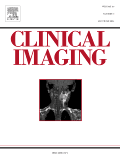
Clinical Imaging
Advancing the Future of Diagnostic ImagingClinical Imaging, published by Elsevier Science Inc, is a renowned journal dedicated to the field of radiology, nuclear medicine, and imaging. With an ISSN of 0899-7071 and an E-ISSN of 1873-4499, this esteemed publication has established its significance in advancing imaging science since its inception in 1989 and continues to make impactful contributions to the discipline through 2024. The journal holds a prestigious Q2 ranking in the category of Radiology, Nuclear Medicine, and Imaging, reflecting its critical role in bridging research and clinical practice. Currently ranked #113 out of 333 by Scopus, with a notable 66th percentile, it offers a platform for disseminating high-quality research, reviews, and case studies that inspire innovation and enhance imaging techniques. Although it primarily functions as a subscription-based journal, it remains dedicated to accessibility and the dissemination of pivotal findings that inform both academia and clinical settings. Clinical Imaging is essential for researchers, professionals, and students alike, offering insights that shape the future of diagnostic imaging.
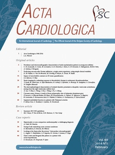
ACTA CARDIOLOGICA
Illuminating the path to better cardiovascular care.ACTA CARDIOLOGICA is a distinguished journal published by TAYLOR & FRANCIS LTD, focusing on the dynamic fields of Cardiology and Cardiovascular Medicine. Established in 1946, the journal has maintained a significant presence in the academic community, providing a platform for cutting-edge research and clinical studies that aim to address challenges in cardiovascular health. With its Q3 rating in both Cardiology and General Medicine categories, it showcases a robust compilation of articles that reflect the evolving landscape of cardiac care. Although ACTA CARDIOLOGICA is not an Open Access journal, it continues to serve a vital role for researchers, professionals, and students dedicated to advancing knowledge in cardiovascular health. This journal, with an ISSN of 0001-5385 and E-ISSN of 1784-973X, is a critical resource for those looking to stay updated on the latest developments and practices in the specialization, contributing significantly to the field until 2024 and beyond.
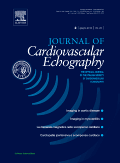
Journal of Cardiovascular Echography
Pioneering insights in echocardiographic techniques.Journal of Cardiovascular Echography, published by WOLTERS KLUWER MEDKNOW PUBLICATIONS, serves as a premier platform for global researchers, medical professionals, and students dedicated to the ever-evolving fields of cardiology and cardiovascular imaging. With the ISSN 2211-4122 and E-ISSN 2347-193X, this journal provides access to cutting-edge research from 2011 to 2024, offering insights into the latest advancements in echocardiographic techniques and their clinical applications. Despite its current classification in the Q3 quartile within both Cardiology and Cardiovascular Medicine as well as Radiology, Nuclear Medicine, and Imaging, it continues to make meaningful contributions to the academic community, ranking 234th in the Scopus category for Radiology and 278th in Cardiology. The Journal of Cardiovascular Echography is committed to furthering knowledge and fostering collaboration among researchers by sharing critical developments in the field, making it an essential resource for anyone looking to stay abreast of transformational changes in cardiovascular diagnostics.